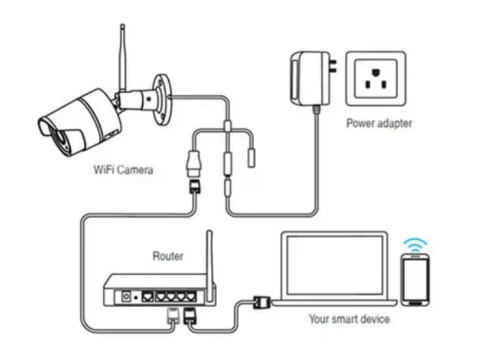How to Connect a WiFi Surveillance Camera
WiFi cameras provide a flexible, wireless way to monitor your home or business. Here's how to connect them to a router, smartphone, or recorder for seamless operation.
1. Connecting a WiFi Camera via a Router
Why Use a Router?
A router creates a local network that connects the camera to other devices, including phones, computers, and the internet.
Steps:
Initial Wired Setup:
- Connect the camera to the router using an Ethernet cable for initial setup.
Access Camera Settings:
- Open a web browser on your computer and enter the camera's IP address.
- Log in with the default credentials (usually on the camera's manual or packaging).
Configure Wireless Settings:
- Enter the SSID (network name) of your WiFi.
- Select the encryption protocol (e.g., WPA2) and input the WiFi password.
Disconnect the Cable:
- After saving the settings, unplug the Ethernet cable.
- The camera should now connect wirelessly to your network.
2. Connecting a WiFi Camera to Your Phone
Using a Mobile App:
Most WiFi cameras are compatible with apps provided by the manufacturer.
Steps:
- Download the camera's app from the App Store or Google Play.
- Follow the app's prompts to scan the camera's QR code or enter its serial number.
- Enter your WiFi credentials to establish the connection.
Tips:
- Ensure your phone and the camera are on the same WiFi network during setup.
- Use a cloud-based service for remote access and live viewing.
3. Connecting WiFi Cameras to a DVR/NVR
Direct Connection:
Some DVRs/NVRs support WiFi cameras directly.
Steps:
- Set the camera’s SSID and encryption settings to match the recorder.
- Use the DVR/NVR interface to search for and add the camera.
Using a Router:
If the DVR/NVR doesn’t support WiFi, connect both the camera and recorder to the same router.
Special Considerations for Outdoor WiFi Cameras
- Placement: Ensure the camera is within the router's WiFi range.
- Weatherproofing: Use cameras rated for outdoor use (IP65 or higher).
- Power Supply: Ensure stable power through adapters or solar setups.
Conclusion
WiFi cameras offer a convenient way to set up surveillance without complex wiring. Whether you connect via a router, smartphone, or DVR, the process is straightforward and scalable. For advanced features like recording and analytics, consider integrating with a DVR/NVR system.

